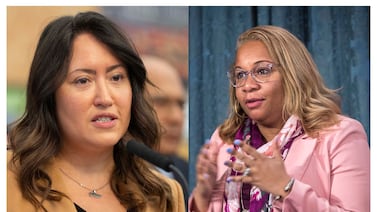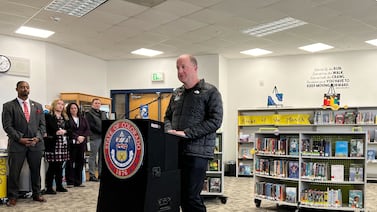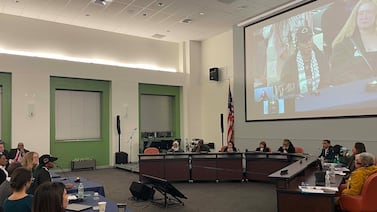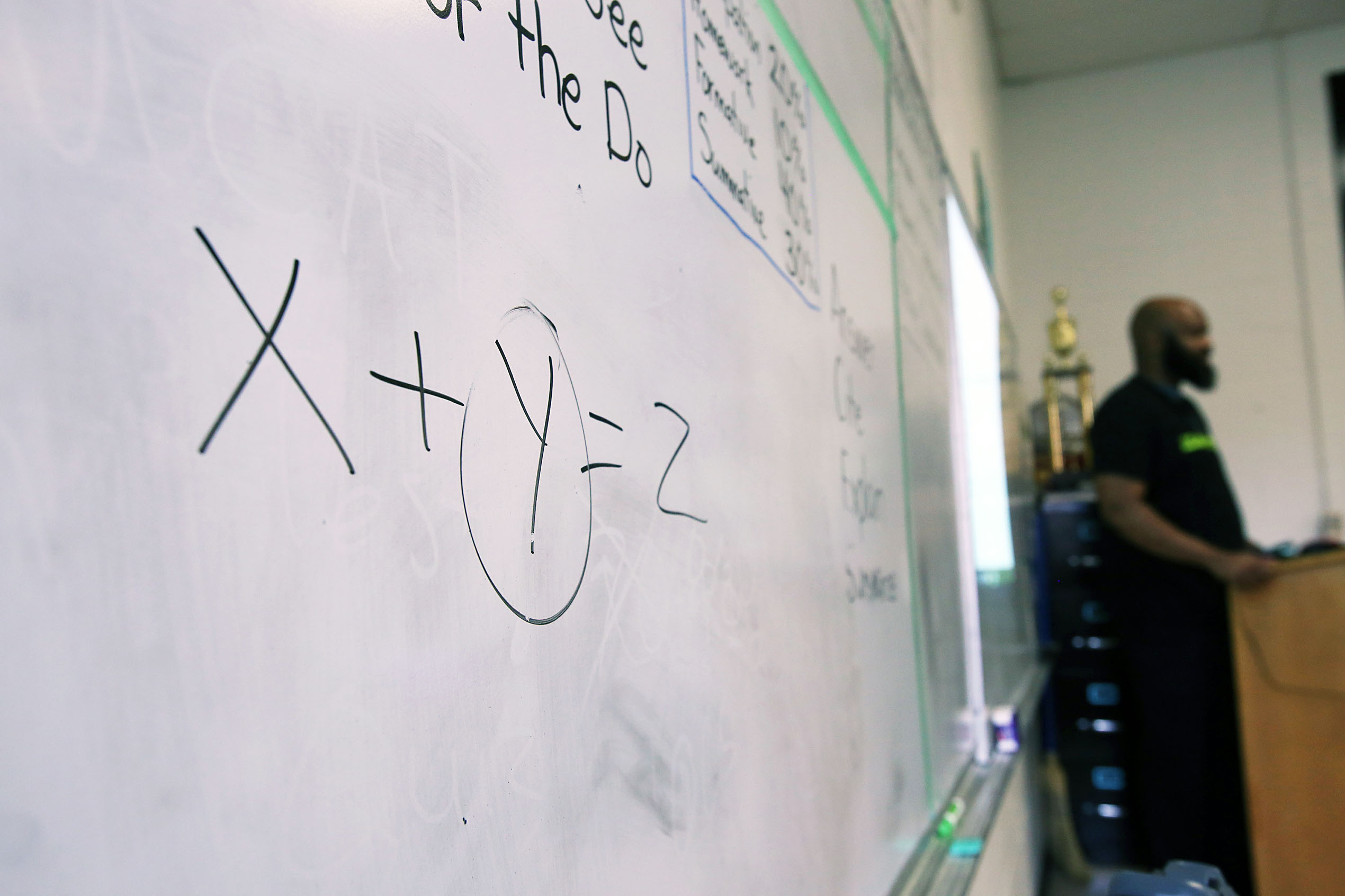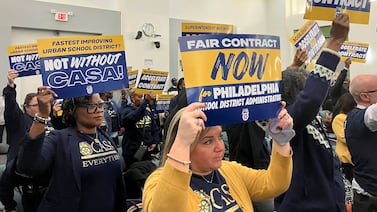Sign up for Chalkbeat New York’s free daily newsletter to keep up with NYC’s public schools.
As New York City’s parents of fifth and eighth graders gear up for middle and high school admissions season, they can expect a few tweaks to the process — though some wonder how much impact the changes will have.
Among the changes city officials announced on Friday, high school applicants will, for the first time, be able to list as many schools as they want for their rankings. These applicants will also have access to a new tool in MySchools that will gauge a high school applicant’s chances of admission to a particular program.
And middle school applicants will be able to apply to any school across the city for the first time.
For high school, the monthslong admissions process — which opens on Oct. 1 — can be taxing for the tens of thousands of eighth grade students considering more than 700 programs at over 400 schools. Schools across the city employ different methods to determine admissions, further complicating the process.
Middle school applications open Oct. 9, with some variations in the process across different programs and districts.
Applications for high school are due Dec. 4. For middle school, they’re due Dec. 13.
Here’s what you should know about this year’s changes:
Middle school applicants can apply to schools outside their district
Previously, fifth grade applicants were largely limited to middle schools within their district, with only a subset of schools accepting boroughwide or citywide applicants.
That said, applicants will continue to have priority at middle schools within their home zone and district, according to city officials.
Though the change is unlikely to affect high-demand middle schools, which will continue to fill up with local applicants, it could still cause meaningful shifts in enrollment, as some students could opt to leave their district for empty seats in schools elsewhere.
City officials noted that about half of the 1,120 respondents to a 2023 middle school admissions survey would have applied to schools outside their district if the option had been available.
Potential enrollment shifts could pose high stakes for districts that already suffer from low enrollment, like District 16 in Brooklyn’s Bedford-Stuyvesant neighborhood, which filled just 885 of its nearly 2,300 middle school seats last school year — leaving roughly 1,400 unfilled — according to district data.
There are also variations in how middle schools admit students across different programs and districts. Many middle schools admit students based on their randomly assigned number, or “lottery number” — using it as a tiebreaker for students within a similar priority group, like those who live in a specific zone or district.
Some middle schools rank students based on specific factors, like those that use auditions or academic screens. Academic screens were initially paused during the pandemic, then brought back in some districts at the discretion of each of the city’s 32 local school district superintendents.
High school applicants can apply to more than 12 schools
Allowing eighth graders to apply to more than 12 schools could introduce even further flexibility to families considering the city’s vast array of high school programs, though some worry it will serve to make an already stressful process even more daunting.
The removal of the 12-school cap is unlikely to cause a major shakeup in the admissions process. Many families already struggle to find 12 choices to list in their applications, and the vast majority of applicants are admitted to one of their top choices.
During the last high school admissions cycle, roughly 77% of applicants received one of their top three choices, according to city data. In total, about 96% were matched to one of the schools they listed — leaving just over 3,000 of the nearly 71,000 applicants without an offer to a school to which they applied.
In recent years, approximately 38% of high school applicants listed a full 12 programs on their high school applications, according to the city’s Education Department.
The change might help some families automatically get spots on more waitlists at high-demand schools, said Elissa Stein, who runs High School 411, an admissions consulting service. But she added it could spur further confusion and stress among families — and isn’t likely to make a significant impact on the admissions process itself.
“It almost opens up the floodgates to more confusion, because it can be challenging to find 12 schools to put on your application,” she said. “To say, ‘Well, now the sky’s the limit,’ can add a level of confusion and pressure to need to find more.”
Officials emphasized the change is intended to offer families more flexibility, and they aren’t required to take advantage of it.
Alexandra Lange, a Brooklyn mom whose eighth grade son will be applying for high schools this year, said she doesn’t expect the change to impact her son’s application.
“I already think that 12 is more than enough,” she said. “It’s really hard for me to imagine what parents are asking for this change, because it feels like more work and more pressure, rather than paring back the process.”
Researching potential high schools for the application can be a time-consuming process, Lange said. For her family, it meant reading up on programs, taking tours, testing commutes, speaking with other parents about their experiences at different schools, and more.
Lange added she’s been dreading this admissions cycle, as it overlaps with her 12th grade son applying to colleges.
“There’s all this talk in the news now about how stressed kids are and how stressed parents are, and I just don’t understand why the application processes for both high school and college — and in New York, we also have a middle school application process — are just making more and more work for all those stressed people?” she said. “I don’t understand what parent or kid wants this.”
High school applicants have a new tool indicating their odds at particular schools
A new tool in MySchools that accounts for variables like a student’s home district or borough, their grades, their priority group, and more, aims to help families better understand their chances at particular schools.
The tool — developed in partnership with the Massachusetts Institute of Technology’s Blueprint Labs — will tell families whether they have a high, medium, or low chance of admission. A high chance means students have a 99% chance of receiving an offer, while a low chance corresponds to about a 1% chance, according to Education Department officials.
About 50% of students with a medium chance of admission are expected to receive an offer, officials added.
In general, the high school admissions process is not for the faint of heart. Evaluating the city’s many options can add significant stress to families, and the process has faced criticism for being inequitable — with families who have more time and resources to devote to the process having an upper hand.
There are selective schools that sort applicants into four different priority groups based on their seventh grade GPAs in core subjects, using a student’s randomly assigned number, or “lottery number,” as a tiebreaker. Other schools that use open or educational option admissions primarily consider an applicant’s random number for admissions, though some take into account additional criteria to create priority groups. (Educational option programs set aside seats for students at different academic levels to promote academic diversity.)
Some schools also require admissions essays or auditions, while others participate in a diversity initiative, setting aside a certain number of seats for students who are low-income, English language learners, or live in temporary housing. And eight of the city’s specialized high schools that require a test for admission, including Stuyvesant and Bronx Science, are separate from the rest of the admissions process.
Are you applying to high school this year? We want to hear from you.
If you are a NYC parent whose child is applying to high school this year, Chalkbeat wants to hear from you.
We’re interested in hearing about any concerns you may have as you embark on this process, and what kind of information would be helpful for your family in making decisions.
Please fill out the form below to let us know what’s on your mind as this year’s admissions season approaches.
Michael Elsen-Rooney contributed.
Julian Shen-Berro is a reporter covering New York City. Contact him at jshen-berro@chalkbeat.org.


